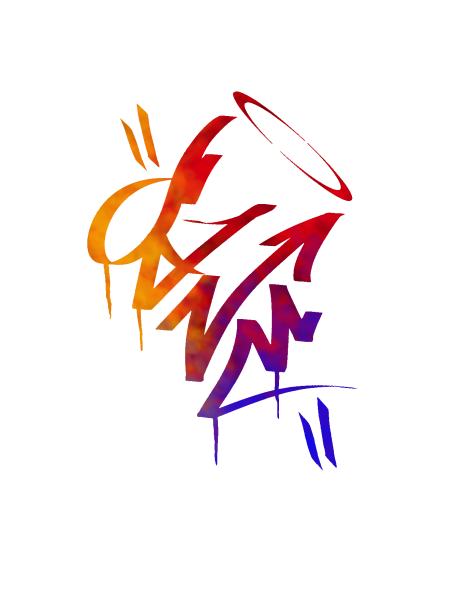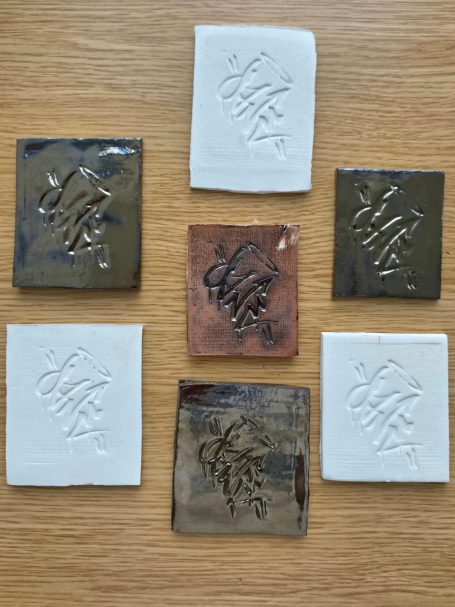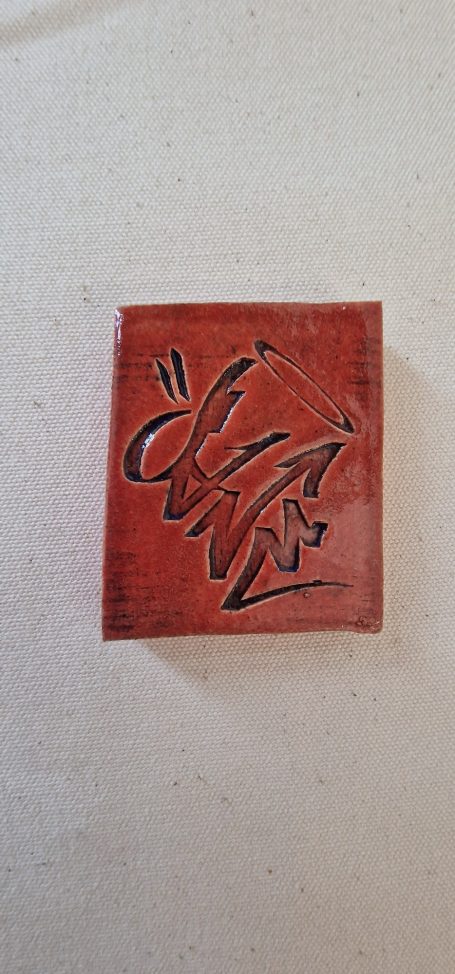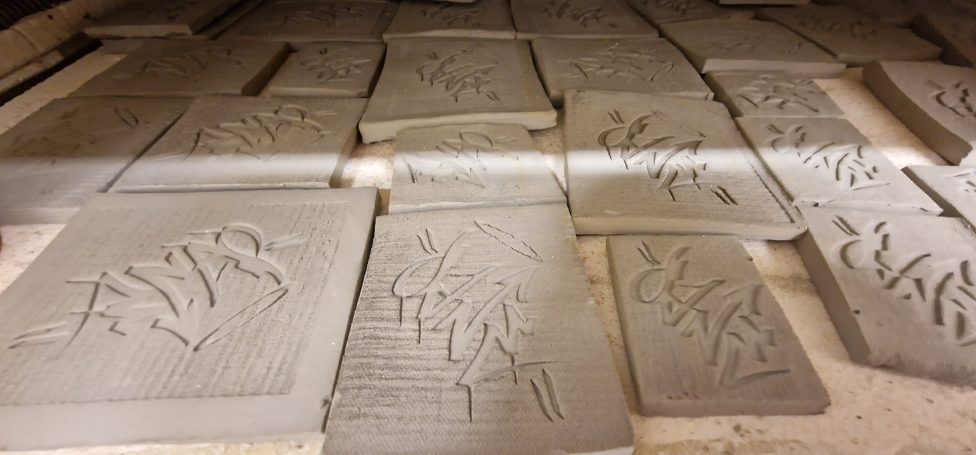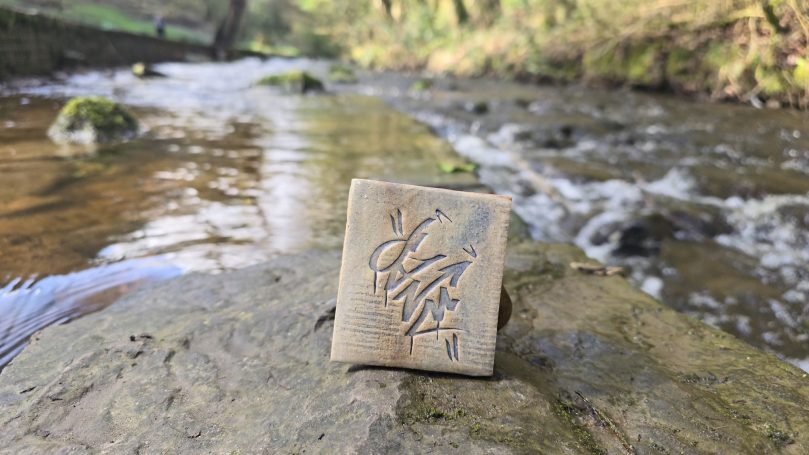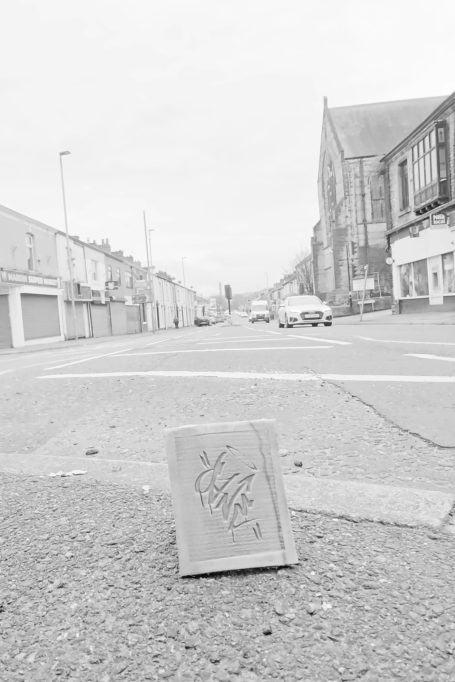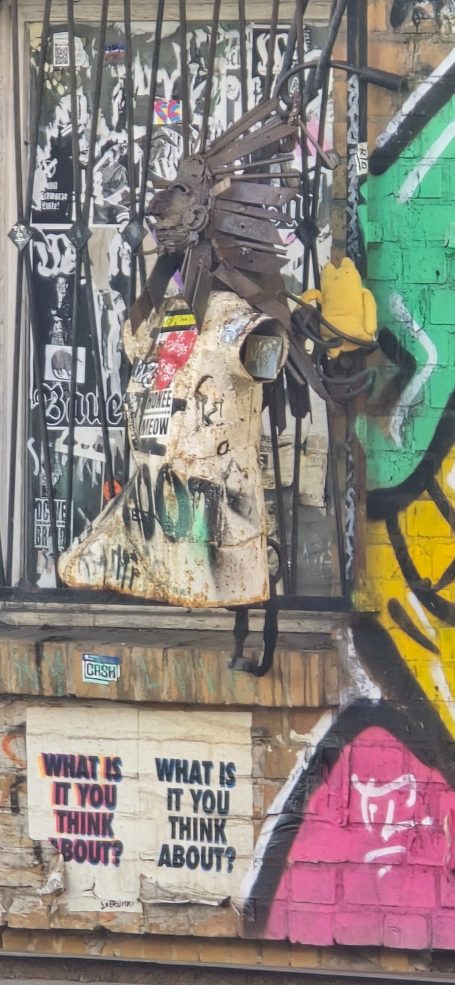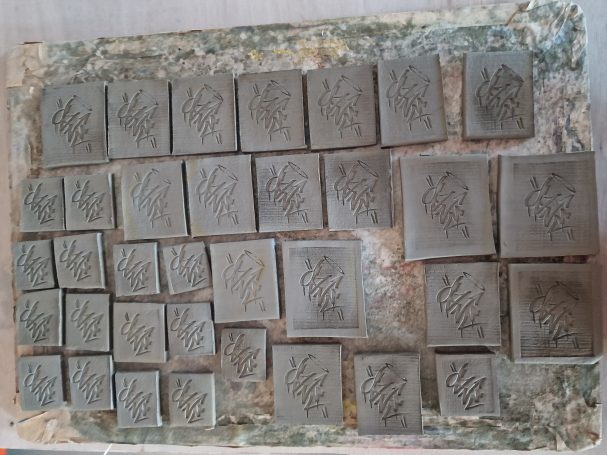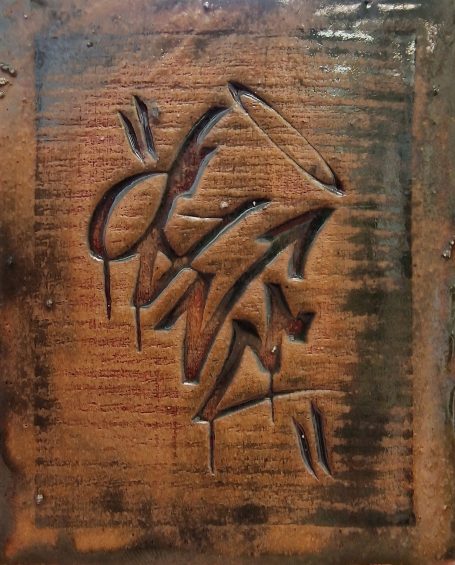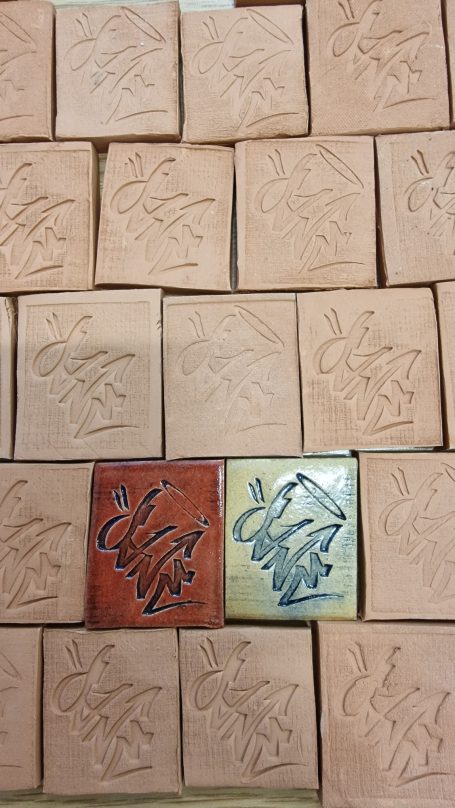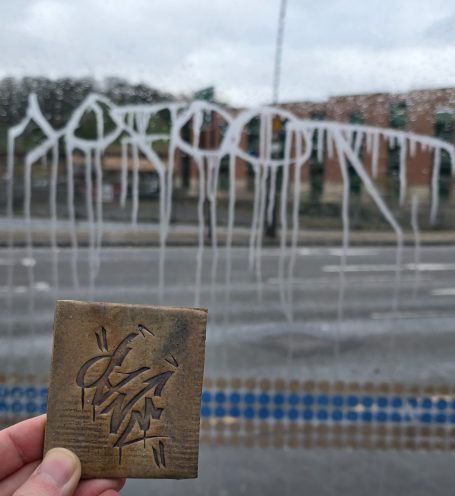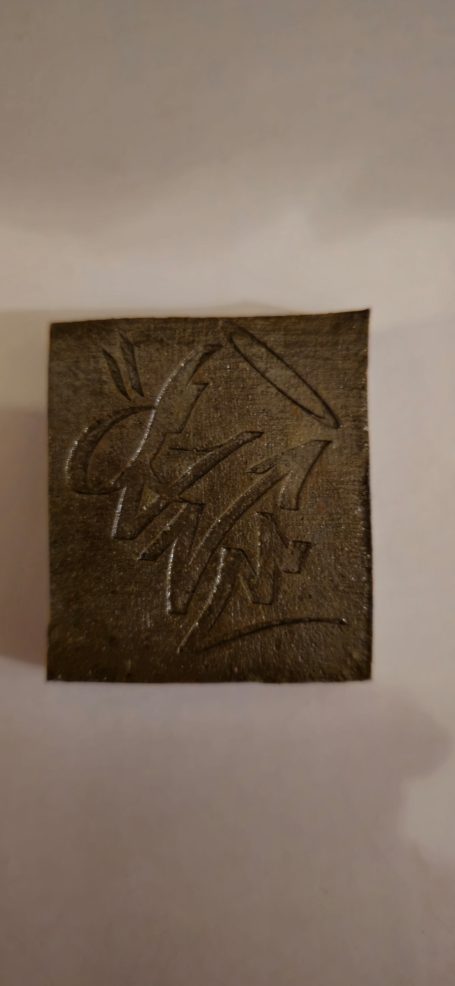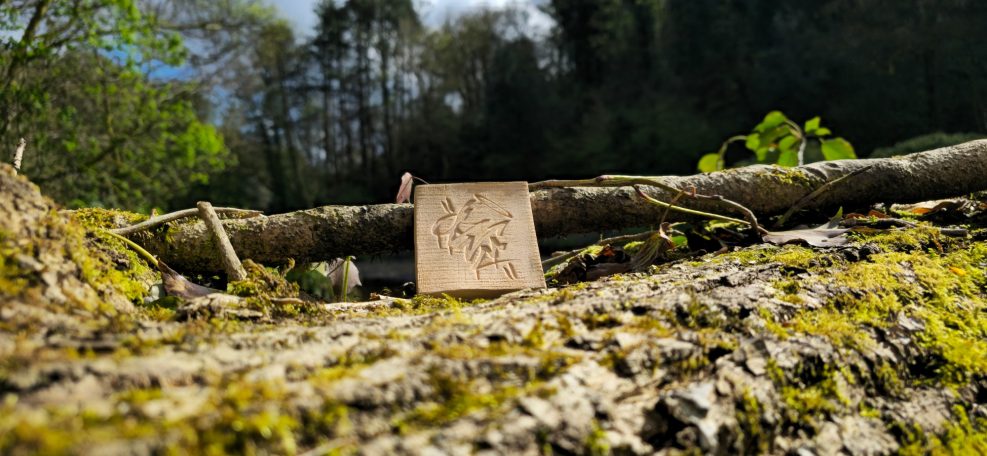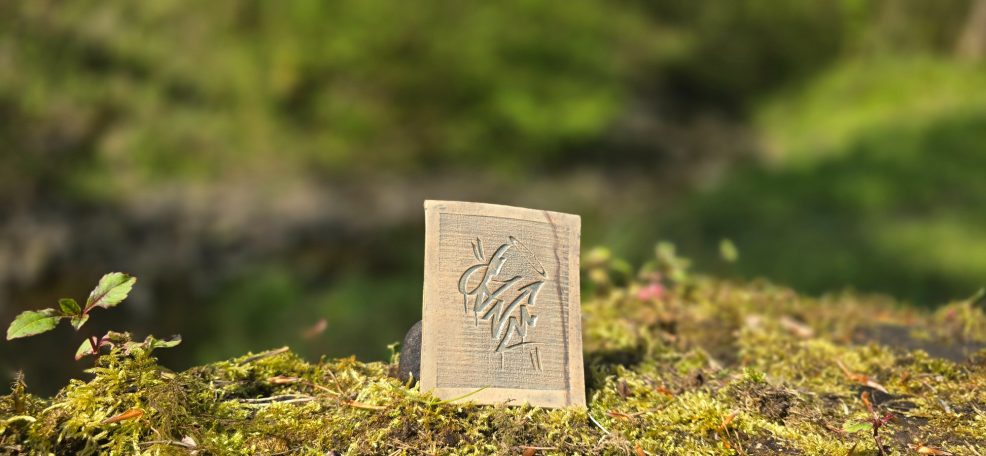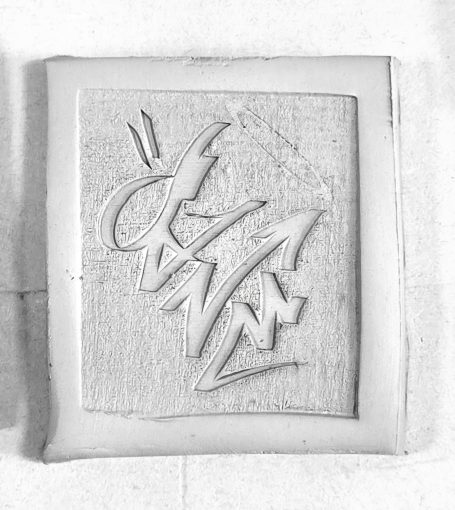Tiles
These tiles are part of an ongoing exploration — a way to make the mark move, to let graffiti step outside its usual boundaries, to give the gesture of writing a body that can travel.
Graffiti is so often tied to place. Fixed. Rooted. It lives on walls, trains, alleyways, rooftops — forever in conversation with the surface it’s painted on, the landscape it occupies, and the people who pass by. But these tiles are something different. They are designed to be held, traded, pocketed, gifted, lost, found again. Each one carries the tag, the line-work, the hand that made it — but unlike a piece on a wall, these aren’t stuck. They’re free to travel. They can move from one hand to another, cross borders, slip into the pocket of a stranger, end up on a shelf or a bar counter, or buried beneath the dust of a new city.
At the core of this work sits a question about value and meaning. What happens when graffiti becomes an object? What happens when the mark — usually fixed in place, part of the architecture — becomes portable, transferable, something you can hold in your palm, pass along to a friend, or leave behind for a stranger to find? Does the meaning shift? Does the energy of the gesture hold? Does its power grow or diminish when it’s no longer anchored to one location but instead becomes a nomad, capable of crossing streets, cities, countries?
These tiles aren’t just objects — they’re carriers of intent, fragments of a conversation that refuse to stay still. They embody a tension between permanence and impermanence. Durable yet mobile. Solid but open to change. They’re made to be interacted with, not just looked at. They ask the viewer to become part of the process: to hold the piece, to consider its weight, to decide where it belongs next. To keep it, or to let it move on.
And that’s exactly what’s been happening. These tiles aren’t confined to one place. They’ve found homes — temporarily or otherwise — in Berlin, in Barcelona, in London. They’ve sat on bar tops in the Silberfisch, tucked into the corners of art studios in Blackburn, placed carefully into the hands of friends and strangers on the streets of the Gothic Quarter. They’ve been photographed on rooftops, on train seats, in markets, on mountain tops. They’ve crossed languages, customs, and expectations. Each journey, each encounter adds to their story — a layer of meaning that isn’t tied to any one surface or city.
The project leans into this international movement, embracing the unpredictable paths these pieces take. It plays with the idea that art, and particularly graffiti, doesn’t need to be locked in place to be powerful. That the mark doesn’t lose its charge when it moves — in fact, maybe it gathers more along the way. Like a well-traveled passport, the tile picks up fingerprints, scratches, and stories as it goes.
In a way, the tiles act as ambassadors of the tag — small, durable pieces that carry the energy of graffiti into spaces where it might not normally exist. They break the rules of location-based writing, stepping into the role of artifact, talisman, message-in-a-bottle. They hold the tension of being both artwork and object, both intentional mark and found thing.
This gallery is only ever a snapshot — never a full stop. The project is ongoing, because the tiles are still moving, still being traded, given, found, misplaced, re-found. Tiles move. Stories move. And that’s the point.
©Copyright. All rights reserved.
We need your consent to load the translations
We use a third-party service to translate the website content that may collect data about your activity. Please review the details in the privacy policy and accept the service to view the translations.
